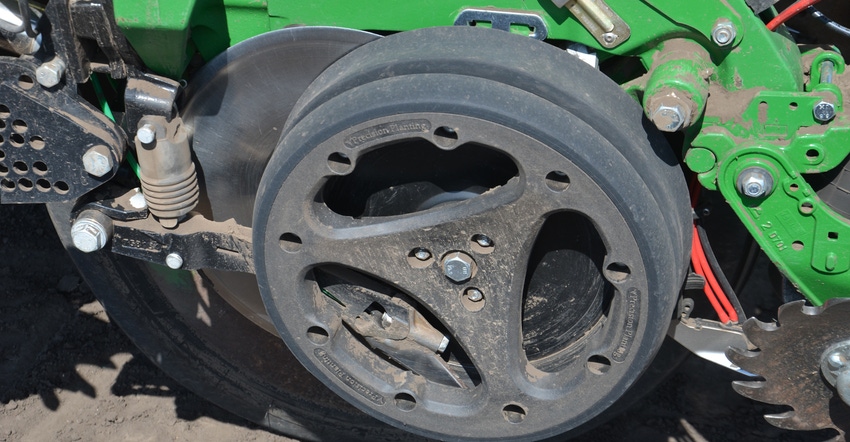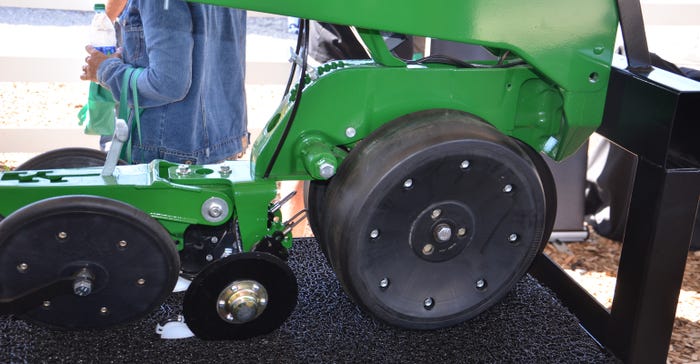
All kinds of options exist for applying pop-up or starter fertilizer. Pop-up fertilizer goes into the furrow. But where does starter go? Industry specialists say that depends on what type of attachments you use. Agronomists say whichever attachments you use, make sure fertilizer is going where you think it’s going in each row. Otherwise, if you’re applying large amounts of nitrogen or potash, you could cause plant injury.
Tony Vyn, a Purdue University Extension agronomist, looks at fertilizer placement for nitrogen in various studies. In this interview with Farm Progress, Vyn discusses why you should pay attention to starter fertilizer placement in corn.
How do you define 2-by-2 starter placement? Traditionally, this means applying a band of fertilizer 2 inches to the side of the row and 2 inches below the seed. In practice, you may think that’s where it’s going, but it may be going shallower or closer to the row. That can happen due to coulter wear or misalignment, or if soils are relatively hard. The only way to know for sure is to check each row. There can be variation in fertilizer placement from row to row.
Why is it important to know where you’re placing starter fertilizer? It’s especially important if you’re applying relatively high rates of nitrogen and/or potassium fertilizer as starter. The higher the rate and the closer it’s placed to the seed, the greater the chances for injury, including seedling death and/or stunting. Chances for injury are greatest in sandy soils or in dry springs.
How much nitrogen can you safely apply as starter? If it’s truly a 2-by-2 placement, you can apply 50 to 70 pounds of N per acre if there is no potash in the starter. If there is potash, you can’t apply as much N. Phosphorus is not a factor in plant injury. The higher the nitrogen rate you apply, especially if it’s a band on one side of the row, the farther away the better. Three inches to the side might be better than 2.
What happens if injury occurs? We’ve documented stand loss due to fertilizer burn on seedlings, and yield reduction due to stand loss. We’ve also documented stunting, even if plants survive. We’ve seen yield reductions due to stunting caused by fertilizer injury.
Can you place fertilizer 2 inches to the side but at the same depth as the seed effectively? We’ve seen a benefit for doing that in some situations, especially in continuous corn with lots of residue. Again, make sure you know where it’s being placed.
What about placing starter on both sides of the row? That practice has gained interest recently after some corn growing champions have talked about it. We don’t have data on it either way. I’m not sure if there would be a consistent benefit over time, except in sandy soils.

FERTILIZE BOTH SIDES: This is not a new concept — Case two-row 45-E and 46-E planters could place fertilizer on both sides of the row or hills in regular or check-row corn. The concept is reborn today. Yield Center 360 offers the Bandit attachment, placing fertilizer on both sides of the row.

About the Author(s)
You May Also Like




